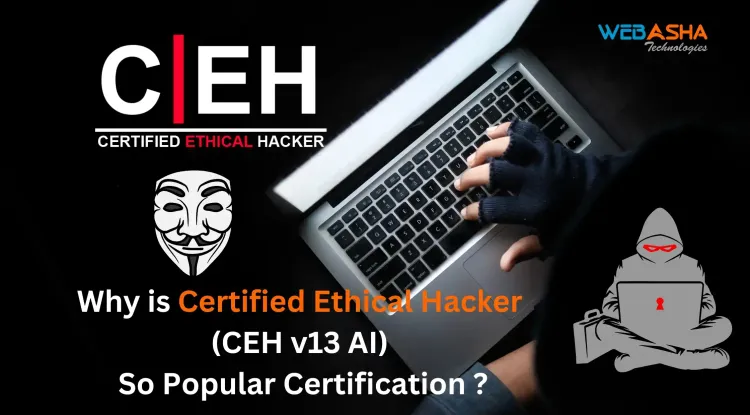Is BlackEye Phishing Still Effective in 2025? Exploring Its Evolution, Risks, and Prevention Strategies
BlackEye phishing is a widely used tool by cybercriminals to create convincing phishing pages designed to steal sensitive information like usernames, passwords, and banking credentials. While BlackEye has been a significant threat in past years, its effectiveness in 2025 depends on various factors, including evolving cybersecurity defenses, awareness among users, and advancements in anti-phishing technologies. This blog explores how BlackEye phishing has evolved in 2025, the risks it poses, and whether it remains a viable method for cybercriminals. We discuss the improvements in online security, AI-driven phishing detection, and legal measures that have made phishing attacks more challenging. Additionally, we highlight how organizations and individuals can protect themselves from such attacks through multi-factor authentication (MFA), phishing-resistant authentication methods, and increased cybersecurity training. Despite improvements in cybersecurity, phishing remains a persistent t

Table of Contents
- Understanding BlackEye Phishing
- Effectiveness of BlackEye Phishing in 2025
- Best Practices to Detect and Prevent BlackEye Phishing in 2025
- Is BlackEye Phishing Still a Threat in 2025?
- Conclusion
- FAQs
As cybersecurity threats evolve, phishing remains one of the most prevalent attack vectors. BlackEye Phishing, a widely used phishing toolkit, has gained attention due to its ability to create realistic fake login pages. But in 2025, with advancements in cybersecurity measures, is BlackEye phishing still an effective attack method? This blog explores its effectiveness, new countermeasures, and how individuals and organizations can stay protected.
Understanding BlackEye Phishing
What is BlackEye Phishing?
BlackEye is an open-source phishing toolkit that allows attackers to clone legitimate login pages and trick users into entering their credentials. It automates the creation of realistic phishing pages, making it a preferred choice among cybercriminals.
How BlackEye Works
- Website Cloning: The attacker clones a login page of a trusted service (e.g., Facebook, Google, or Instagram).
- Link Distribution: The attacker sends the phishing link via email, SMS, or social media.
- Credential Harvesting: Once the victim enters their credentials, the data is sent to the attacker.
- Session Hijacking (Advanced Attacks): Some versions of BlackEye can capture session tokens, enabling attackers to bypass two-factor authentication (2FA).
Effectiveness of BlackEye Phishing in 2025
Advancements in Cybersecurity
Cybersecurity measures have significantly improved over the years, making traditional phishing attacks less effective. Here’s why BlackEye phishing faces challenges in 2025:
- Enhanced AI-Based Email Filtering: Modern email security solutions use artificial intelligence to detect and block phishing attempts before they reach users.
- Browser Security Upgrades: Most browsers now flag non-HTTPS websites and display security warnings when users visit suspicious sites.
- Advanced Multi-Factor Authentication (MFA): Even if an attacker steals credentials, MFA adds another layer of protection, making unauthorized access difficult.
- Improved User Awareness: Organizations and individuals are more educated about phishing attacks, reducing the likelihood of falling victim.
How Attackers Are Evolving
Despite these advancements, attackers continue to refine their techniques. BlackEye phishing has adapted in the following ways:
- Using HTTPS Certificates: Hackers now deploy SSL certificates to make phishing sites appear secure.
- Exploiting QR Codes: Attackers use QR codes to bypass email security filters and redirect users to phishing pages.
- AI-Generated Phishing Messages: Machine learning enables attackers to craft more convincing phishing emails that evade detection.
- Social Engineering Attacks: Attackers rely on human psychology rather than technical weaknesses, making phishing attempts more sophisticated.
Best Practices to Detect and Prevent BlackEye Phishing in 2025
How to Detect BlackEye Phishing Attacks
- Check the URL: Always inspect website URLs for typos, extra characters, or strange domains.
- Look for HTTPS & Certificates: While HTTPS is not a guarantee, missing security indicators can be a red flag.
- Hover Over Links: Before clicking any link, hover over it to preview the actual destination.
- Be Cautious of Urgent Messages: Phishing emails often create a sense of urgency to trick users into clicking links hastily.
- Analyze Email Headers: Checking the email sender’s details can reveal spoofed addresses.
How to Prevent BlackEye Phishing Attacks
- Enable Multi-Factor Authentication (MFA): Even if an attacker obtains login credentials, MFA prevents unauthorized access.
- Use Security Extensions: Browser extensions like anti-phishing add-ons can help block malicious sites.
- Regularly Update Software: Keeping your system and browsers updated ensures protection against the latest vulnerabilities.
- Educate Employees and Users: Conduct phishing awareness training to help users recognize phishing attempts.
- Verify Links Before Clicking: If an email seems suspicious, manually type the website address instead of clicking links.
Is BlackEye Phishing Still a Threat in 2025?
Despite improvements in cybersecurity, BlackEye phishing remains a threat, especially for users who are unaware of modern phishing tactics. However, organizations implementing advanced security measures, such as AI-based threat detection and zero-trust security models, significantly reduce the risk.
Cybercriminals continuously adapt, but staying informed and using multi-layered security approaches can prevent BlackEye phishing attacks from succeeding.
Conclusion
BlackEye phishing may still be partially effective in 2025, but its success rate has decreased due to advancements in cybersecurity. Organizations and individuals who implement strong authentication methods, AI-powered email filtering, and user education programs can effectively mitigate the risks. While cybercriminals will continue to evolve their techniques, staying proactive and security-conscious is the best defense against phishing attacks.
By understanding how BlackEye phishing works and applying preventive measures, users can better protect themselves from falling victim to phishing scams. The key to cyber resilience is continuous awareness, adaptation, and the use of advanced security solutions.
FAQs
What is BlackEye phishing?
BlackEye phishing is a phishing toolkit used to create fake login pages to steal user credentials and other sensitive information.
Is BlackEye phishing still effective in 2025?
While cybersecurity defenses have improved, BlackEye phishing is still used by hackers, though its success rate has decreased due to stronger detection methods.
How does BlackEye phishing work?
It clones legitimate websites and tricks users into entering their login details, which are then captured and stored by attackers.
What makes BlackEye different from other phishing tools?
BlackEye is known for its ability to generate realistic phishing pages and its user-friendly interface, making it accessible to both beginners and advanced attackers.
Why is BlackEye phishing still a threat in 2025?
Despite advancements in cybersecurity, human error and lack of awareness allow phishing attacks to remain effective.
Has cybersecurity technology reduced the impact of BlackEye phishing?
Yes, improvements in AI-driven threat detection and browser security features have made it harder for attackers to succeed.
Can BlackEye phishing bypass multi-factor authentication (MFA)?
Some advanced versions of phishing kits attempt to capture MFA codes, but using hardware-based authentication can prevent such attacks.
What are the signs of a BlackEye phishing attack?
Look for suspicious URLs, unexpected login requests, grammatical errors, and unverified senders in emails.
Which industries are most targeted by BlackEye phishing in 2025?
Financial institutions, healthcare, e-commerce, and social media platforms remain primary targets for phishing attacks.
Can BlackEye phishing be used for ethical hacking?
While penetration testers may use it to simulate phishing attacks for training, unauthorized use of BlackEye is illegal.
What legal actions are taken against BlackEye phishing users?
Many countries have strict anti-phishing laws, and perpetrators can face heavy fines or imprisonment.
How do web browsers protect against BlackEye phishing?
Modern browsers have built-in phishing detection, warning users about unsafe websites and blocking malicious links.
Are mobile users more vulnerable to BlackEye phishing?
Yes, mobile users are often more susceptible due to smaller screens and lack of detailed URL visibility.
How do cybercriminals distribute BlackEye phishing links?
They use emails, social media messages, fake advertisements, and compromised websites to spread phishing links.
What role does AI play in combating BlackEye phishing?
AI-powered security tools can analyze suspicious activity and detect phishing attempts in real-time.
How do security professionals analyze BlackEye phishing attacks?
They use network traffic monitoring, email forensics, and phishing URL analysis to identify and prevent attacks.
Can organizations train employees to recognize BlackEye phishing?
Yes, regular cybersecurity awareness training helps employees identify and report phishing attempts.
How do phishing simulations help prevent BlackEye attacks?
They allow companies to test employees' awareness and improve their ability to detect phishing attempts.
What should I do if I accidentally enter my credentials on a BlackEye phishing site?
Immediately change your passwords, enable MFA, and monitor your accounts for suspicious activity.
Does BlackEye phishing only target individuals?
No, attackers also use it to target businesses, government agencies, and organizations.
How does BlackEye phishing affect businesses?
It can lead to data breaches, financial losses, reputational damage, and legal consequences for companies.
What cybersecurity tools help prevent BlackEye phishing?
Firewalls, secure email gateways, anti-phishing browser extensions, and threat intelligence tools are effective against phishing.
Are there any alternatives to passwords to prevent phishing attacks?
Yes, passwordless authentication methods like biometric authentication and security keys provide stronger security.
How do attackers update BlackEye phishing techniques in 2025?
They integrate AI, deepfake technology, and advanced social engineering to make phishing attempts more convincing.
What is the future of BlackEye phishing beyond 2025?
As security improves, attackers may shift to more sophisticated cyber threats, reducing the effectiveness of traditional phishing tools.
How can businesses report BlackEye phishing attempts?
They can report phishing sites to cybersecurity organizations, law enforcement, and web hosting providers to take them down.
What laws protect users from phishing attacks in 2025?
Cybercrime laws have become stricter, with international cooperation to track and prosecute phishing attackers.
Can threat intelligence services detect BlackEye phishing in advance?
Yes, threat intelligence platforms analyze data from past attacks to predict and prevent future phishing threats.
How can users stay safe from BlackEye phishing in 2025?
By using strong passwords, enabling MFA, staying updated on phishing tactics, and avoiding suspicious links or attachments.












![Top 10 Ethical Hackers in the World [2025]](https://www.webasha.com/blog/uploads/images/202408/image_100x75_66c2f983c207b.webp)

![[2025] Top 100+ VAPT Interview Questions and Answers](https://www.webasha.com/blog/uploads/images/image_100x75_6512b1e4b64f7.jpg)









